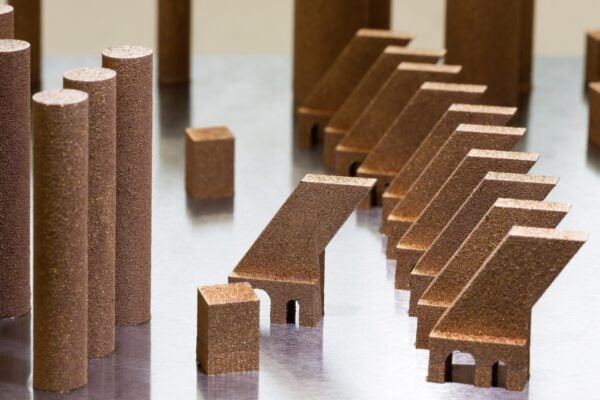
Quality boost in 3D printing opens up new applications in mobile comms, consumer electronics
Heraeus Additive Manufacturing has optimized the material and process on a standard printer: The materials and manufacturing specialist has succeeded in producing components with a density of 99.8 percent of the solid material and a conductivity of approx. 95 percent IACS (International Annealed Copper Standard) using 3D printing. For this process, approximately 85 percent IACS is standard on the market. According to the company, the additive production of highly conductive copper components is now possible and economical in many industrial sectors. Due to printing “on demand”, the process reduces the procurement of earth replacement parts from several months to a few days.
Application examples are components from the areas of electric drives, inductive heating, thermal management and other applications that exploit the excellent electrical and thermal properties of copper. Manufacturing tolerances in conventional manufacturing processes are often too high to achieve reproducibility in particularly sensitive manufacturing processes, such as products for sophisticated heat sinks or laser transmission. The Heraeus developers are now working on further increasing the conductivity of microalloyed copper and transferring the findings of the experts to standard equipment from other manufacturers. This adaptation is necessary because the systems of different manufacturers behave differently.
The challenge for material and process developers is that copper has high conductivity and ductility, but reflects the laser wavelength used in standard systems almost like a mirror. At the same time, the high thermal conductivity of copper ensures that the coupled energy is quickly dissipated. This results in a very narrow process window. These characteristics make conventional 3D printing of pure copper impossible. So far, one solution has been to use different copper alloys, but these tests have all been at the expense of conductivity and other properties such as corrosion resistance. Another approach has so far been to modify the manufacturing process, which has resulted in a reduction in component quality. For example, the component has a higher porosity if the laser beam only melts the material and does not completely melt it. A third approach is to use other laser sources. There is no commercial implementation of this yet.
At the Formnext trade fair (Frankfurt, November 13-16) Heraeus will present its new development and show 3D-printed highly conductive copper components. The materials and process specialist will show further technological highlights that are relevant for the areas of mobility, electronics, robotics and hydraulics, medicine and aerospace. The focus will be on additive manufacturing with special materials from the amorphous metals, refractory metals, precious metals, and lightweight alloys such as scalmalloy.
 If you enjoyed this article, you will like the following ones: don't miss them by subscribing to :
eeNews on Google News
If you enjoyed this article, you will like the following ones: don't miss them by subscribing to :
eeNews on Google News




